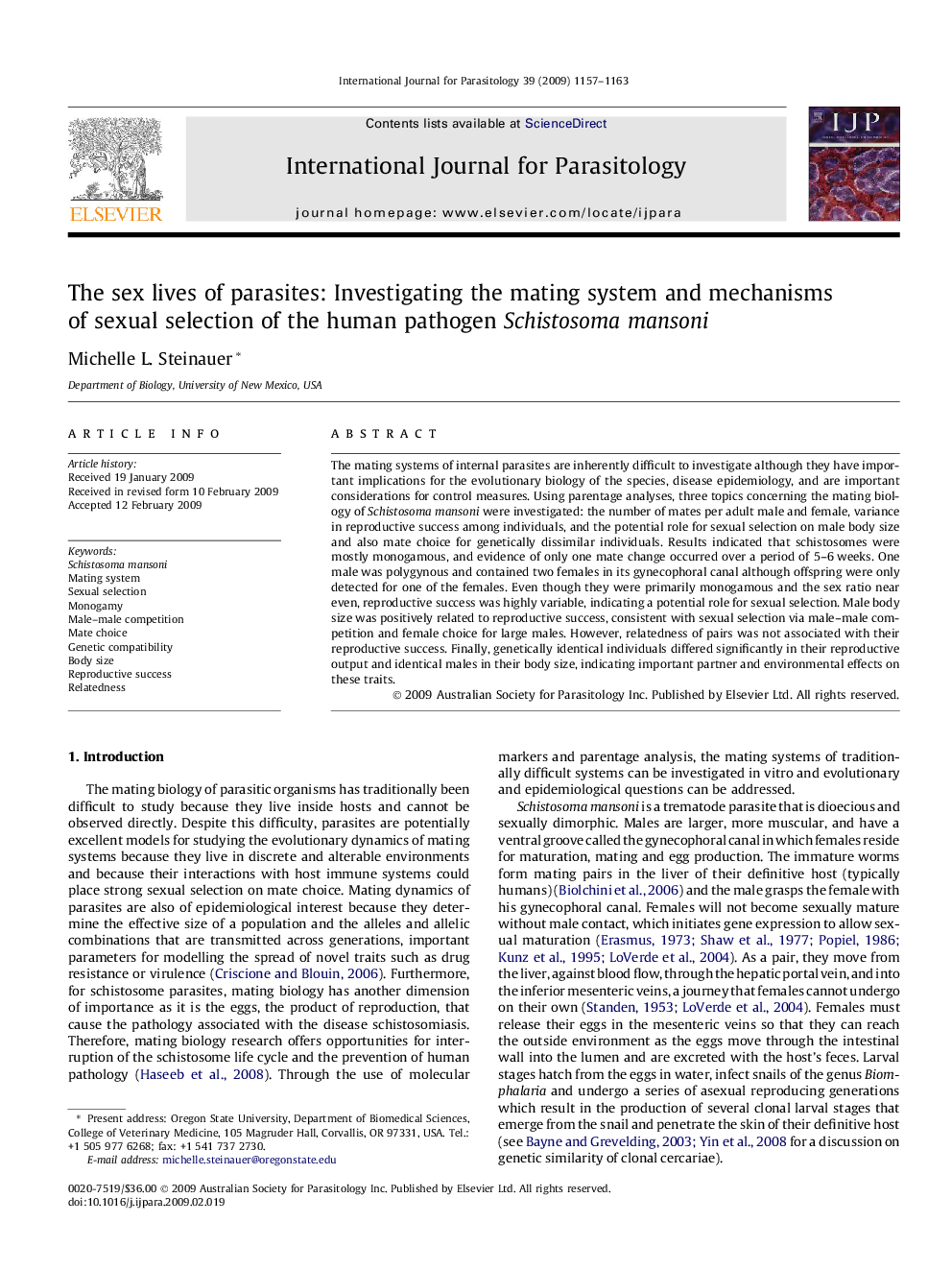| Article ID | Journal | Published Year | Pages | File Type |
|---|---|---|---|---|
| 10972916 | International Journal for Parasitology | 2009 | 7 Pages |
Abstract
The mating systems of internal parasites are inherently difficult to investigate although they have important implications for the evolutionary biology of the species, disease epidemiology, and are important considerations for control measures. Using parentage analyses, three topics concerning the mating biology of Schistosoma mansoni were investigated: the number of mates per adult male and female, variance in reproductive success among individuals, and the potential role for sexual selection on male body size and also mate choice for genetically dissimilar individuals. Results indicated that schistosomes were mostly monogamous, and evidence of only one mate change occurred over a period of 5-6Â weeks. One male was polygynous and contained two females in its gynecophoral canal although offspring were only detected for one of the females. Even though they were primarily monogamous and the sex ratio near even, reproductive success was highly variable, indicating a potential role for sexual selection. Male body size was positively related to reproductive success, consistent with sexual selection via male-male competition and female choice for large males. However, relatedness of pairs was not associated with their reproductive success. Finally, genetically identical individuals differed significantly in their reproductive output and identical males in their body size, indicating important partner and environmental effects on these traits.
Keywords
Related Topics
Life Sciences
Immunology and Microbiology
Parasitology
Authors
Michelle L. Steinauer,
